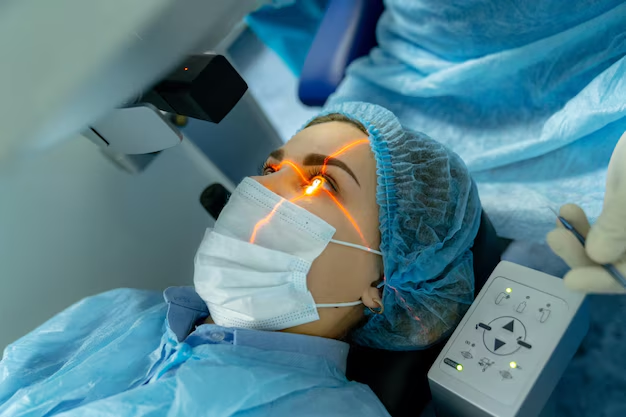How Long Does Cataract Surgery Take to Heal? A Comprehensive Guide
Cataract surgery is a common procedure that can significantly improve vision, but many people wonder how long it takes to heal afterward. Understanding the healing timeline can help set expectations and guide your postoperative care. In this guide, we’ll explore the recovery process, factors affecting healing, and practical tips to ensure a smooth recovery.
The Typical Healing Timeline
Immediate Postoperative Period
After cataract surgery, most patients can expect an immediate improvement in vision. However, your eyes may need time to adjust. In the hours following the procedure, it's normal to experience blurry vision, mild discomfort, and sensitivity to light. These symptoms should improve over the next few days.
First Week of Recovery
During the first week, it's crucial to follow your eye doctor's instructions. Protection is key during this period, as your eye is still vulnerable. Expect your vision to gradually stabilize. By the end of the first week, many people resume most of their daily activities, but strenuous activities should be avoided.
One Month Post-Surgery
Typically, by one month, most healing is complete, and vision has stabilized. Some patients may still need minor adjustments or corrective lenses, especially if additional eye issues are present. Follow-up appointments will determine the final outcome and assess any lingering concerns.
Factors Affecting Healing Time
Age and General Health
An individual's age and overall health can significantly influence healing. Younger, healthier individuals often experience faster recoveries, while older adults or those with health complications may require more time.
Compliance with Postoperative Care
Following your healthcare provider's instructions about using prescribed eye drops, avoiding certain activities, and attending follow-up appointments will impact your healing speed and quality. Non-compliance can lead to complications, delaying recovery.
Pre-existing Eye Conditions
Conditions such as glaucoma, diabetic retinopathy, or macular degeneration can affect both the procedure's success and the healing timeline. Discuss potential impacts with your surgeon before undergoing cataract surgery.
Practical Tips for a Smooth Recovery
Use Prescribed Medications Diligently
Using prescribed eye drops reduces the risk of infection and inflammation. Keep a regular schedule, and reach out to your doctor if any adverse reactions occur.
Protect Your Eyes
Wearing protective eyewear, such as sunglasses when outdoors and an eye shield during sleep or rest, can prevent potential trauma and aid healing.
Maintain Regular Follow-ups
Regular visits to your eye doctor ensure that any complications are addressed promptly and adjustments to postoperative care are made as needed.
Common Concerns About Cataract Surgery Recovery
Can I Drive After Cataract Surgery?
Driving is generally discouraged on the day of your surgery due to the lingering effects of anesthesia and initial blurry vision. Most individuals can resume driving once they feel comfortable with their vision, often a few days to a week after surgery, but this should always be confirmed by your eye doctor.
Will My Vision Be Perfect?
While cataract surgery significantly improves vision, it may not eliminate all vision issues. Glasses or contacts might still be necessary, especially for reading or precision tasks. Your surgeon will discuss these possibilities based on your specific case.
What Happens If I Experience Complications?
Complications, though rare, can occur. These include infection, bleeding, or vision changes. It's vital to contact your eye care provider immediately if you notice severe pain, sudden changes in vision, or persistent discomfort.
Enhancing Your Recovery Process
Healthy Lifestyle Choices
Eating a balanced diet rich in vitamins and minerals can support eye health. Staying hydrated and avoiding smoking are also beneficial for recovery and overall health.
Incorporate Rest Periods
Resting your eyes, especially from screen time, is vital. Regular breaks can reduce strains and support the healing process.
Understand Potential Side Effects
Being informed about potential side effects like mild discomfort, swelling, or dry eyes can help you differentiate between normal recovery symptoms and issues needing medical attention.
Quick Recovery Checklist 📝
- 👀 Use Prescribed Eye Drops: Stay consistent to prevent infections.
- 🕶️ Wear Sunglasses: Protect your eyes from harmful UV rays.
- 🛌 Use an Eye Shield During Sleep: Prevent accidental trauma.
- ✋ Avoid Strenuous Activities: Reduce risk of complications.
- 📅 Keep Follow-up Appointments: Ensure proper healing.
- 🤔 Contact Your Doctor: If you notice unusual symptoms like severe pain or vision changes.
Closing Insight
Cataract surgery is an effective procedure that can improve quality of life through better vision. Understanding the typical healing timeline and factors that can influence it prepares you for a smoother recovery. By following postoperative care instructions and staying in touch with your healthcare provider, you can enjoy the benefits of your new, clearer vision without unnecessary delays or complications. Each person's recovery is unique, so patience and proper care are key to a successful outcome.
